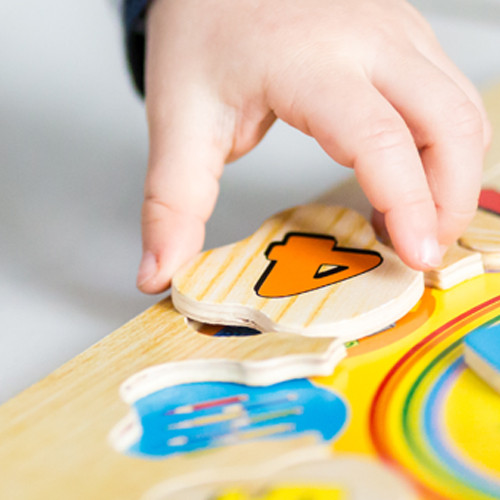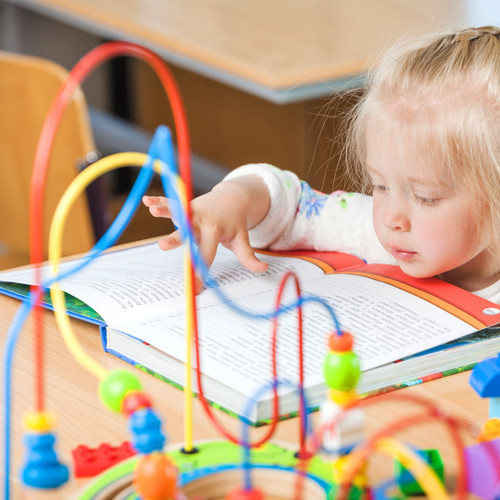Creating Inclusive Learning Environments: Sensory Play for Children with Special Needs
Ah, sensory play – the gateway to a world of wonder and growth for our little ones!
But what exactly is sensory play, and why is it so crucial in early childhood development?
Let's unravel the magic together.
What is Sensory Play?
Sensory play is all about engaging the senses – touch, sight, smell, hearing, and even taste – to create a holistic learning experience.
It's like a secret language that speaks directly to a child's developing brain, fostering connections, and igniting a passion for exploration.
But sensory play is more than just fun and games.
It's a catalyst for growth and learning across various areas of development.
And when children immerse themselves in sensory experiences, they sharpen their cognitive skills, boost their language development, and enhance their social and emotional well-being.
Through sensory play, children develop their fine motor skills as they squish, squeeze, and mold different textures.
They refine their problem-solving abilities.
They enhance their sensory integration.
And let's not forget the power of sensory play in promoting creativity, imagination, and self-expression.
So by understanding the impact of sensory play on early childhood development, we can create intentional and enriching environments that nurture every child's unique journey.
So, let's keep exploring the wonders of sensory play and uncover how it paves the way for incredible growth and learning opportunities.
The Benefits of Sensory Play for Children with Special Needs
In our inclusive journey of creating learning environments, it's essential to recognise the extraordinary benefits of sensory play for children with special needs.
Through sensory experiences, we can unlock a whole world of possibilities.
So let's dive in and explore the remarkable advantages it holds.
Sensory Integration: Sensory play helps children with special needs process information from their senses. By using different textures, sounds, and visuals, we help them respond to things around them and control their reactions.
Communication Skills: Sensory play helps children with special needs communicate without using words. By engaging their senses, they can show what they like, how they feel, and what they've experienced. This makes the child feel empowered and helps them develop communication skills.
Motor Development: Sensory play is like a supercharger for motor skills in children with special needs. When they squeeze, pour, or manipulate objects, they improve their fine and gross motor skills through touch and movement. These skills are important for everyday tasks like writing, dressing, and self-care.
Emotional Regulation: Sensory play creates a comforting space for children with special needs to discover and control their emotions. By engaging their senses, they can find comfort, manage stress, and soothe themselves. This helps them regulate their emotions, promotes well-being, and builds their ability to bounce back from challenges.
Many research studies have consistently highlighted the positive impact of sensory play on children with special needs.
Studies have shown improvements in sensory processing abilities, social interaction, and adaptive behavior. They have also demonstrated how sensory play interventions can enhance attention span, reduce anxiety, and promote engagement in learning activities.
By embracing the benefits of sensory play for children with special needs, we can create inclusive learning environments that honor and support their journeys.
So let's continue to explore the boundless possibilities.
Designing an Inclusive Sensory Play Environment.
Now that we understand the incredible benefits of sensory play for children with special needs, let's dive into the practical side of creating an inclusive sensory play environment in educational settings.
Individualised Approach: It's important to understand that every child is unique, with different sensory preferences, sensitivities, and challenges. Take the time to observe and learn about each child's individual needs, strengths, and areas for growth. This knowledge will help you customise sensory experiences to meet their specific requirements, creating an inclusive environment where every child feels supported and included.
Accessibility Adaptations: Make sure that your sensory play environment is accessible to all children, regardless of their abilities. Adapt the environment to accommodate mobility, vision, or hearing impairments. Install ramps or support bars for children with physical challenges, use visual cues for those with visual impairments, and include tactile elements for those with sensory sensitivities. By removing barriers and providing equal opportunities, you'll create an inclusive space where every child can participate and thrive.
Multi-Sensory Experiences: Use different sensory experiences to engage children with diverse needs. Let them explore textures, sounds, visuals, scents, and body awareness. Provide a variety of materials, calming sounds, visually interesting objects, and pleasant scents. This supports their overall development and caters to individual preferences.
Flexibility and Choice: Understand that children with special needs have different sensory sensitivities and preferences. Give them options and flexibility in the sensory play environment, so they can choose activities that make them comfortable. Some may prefer calm experiences, while others may enjoy more energetic or stimulating activities. By providing choice, you empower them to explore sensory play on their terms and promote their sense of independence.
Conclusion
Remember, creating an inclusive sensory play environment is an ongoing journey of learning and adaptation.
Continuously seek feedback from children, parents, and fellow educators to refine and improve your practices and embrace collaboration and open communication to ensure that every child feels seen, heard, and valued in the sensory play space.
Intrigued by the magic of sensory play?
Explore our carefully curated collection and find the perfect sensory toys to ignite your child's imagination and support their development.



